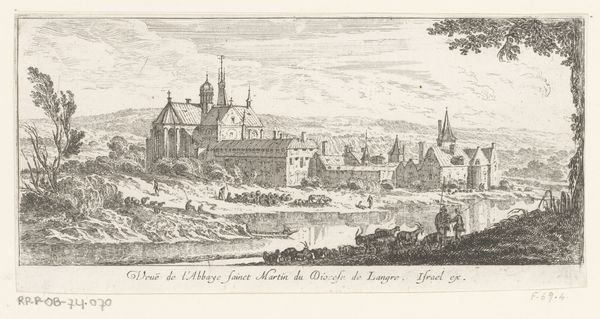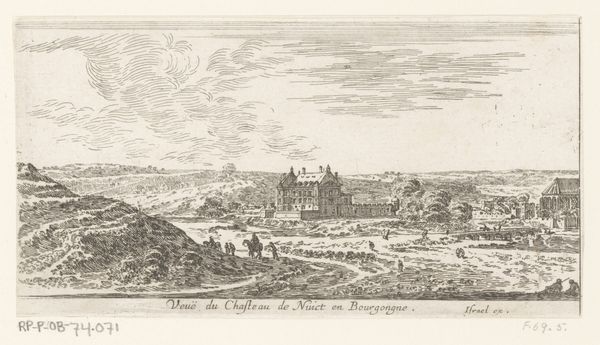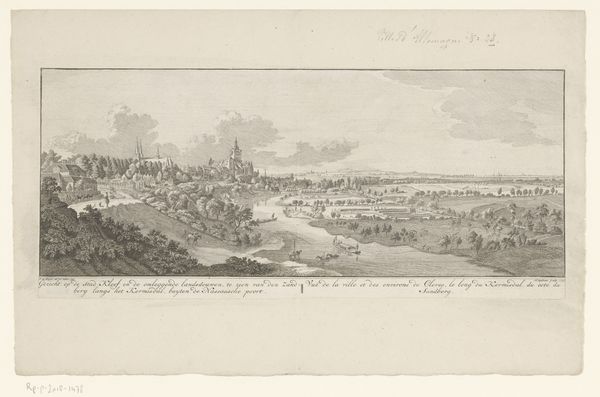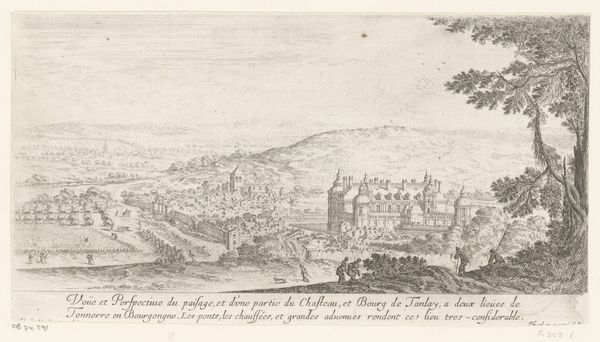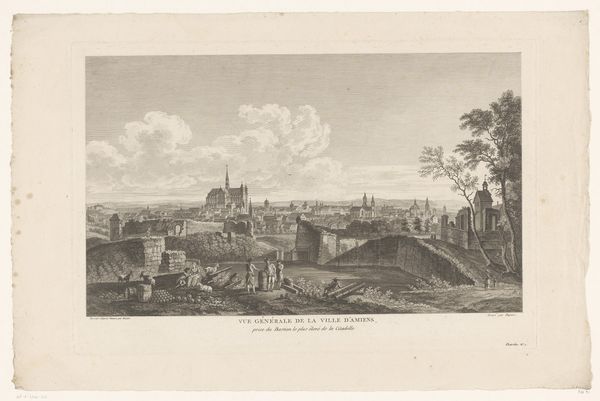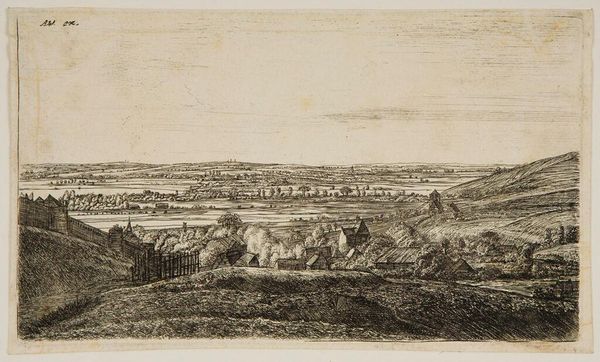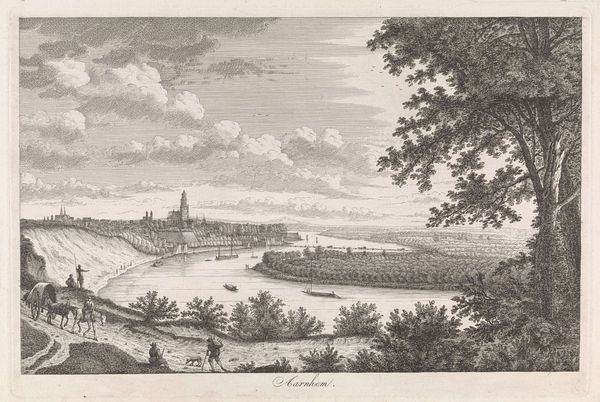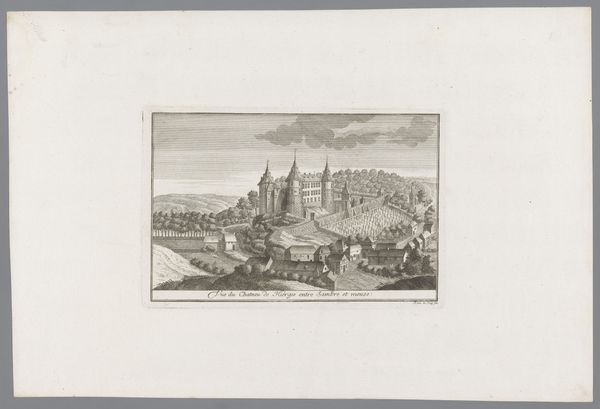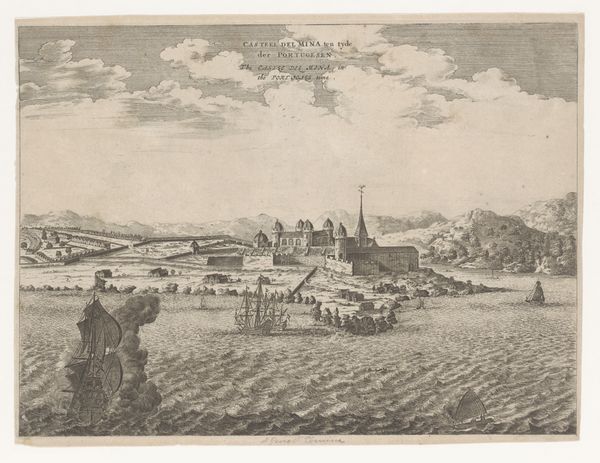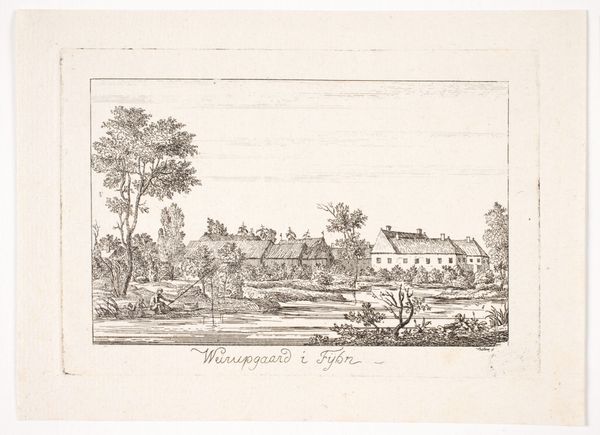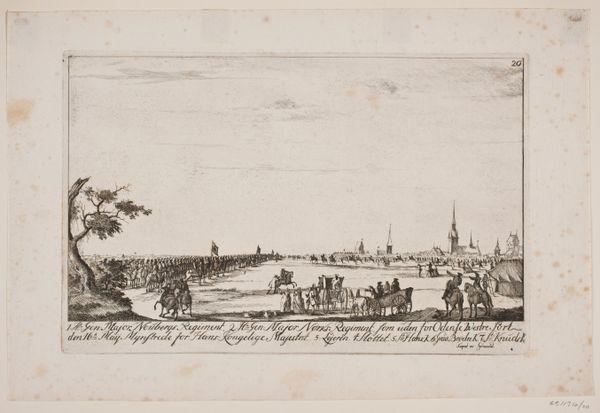
Gezicht op een deel van de kerk van de Karmelieten en de Galerie du Louvre 1631 - 1691
0:00
0:00
israelsilvestre
Rijksmuseum
#
light pencil work
#
pen sketch
#
pencil sketch
#
old engraving style
#
etching
#
personal sketchbook
#
sketchwork
#
pen-ink sketch
#
pen work
#
pencil work
Dimensions: height 125 mm, width 248 mm
Copyright: Rijks Museum: Open Domain
Israel Silvestre made this print of the Carmelite Church and the Galerie du Louvre using etching, a printmaking technique that relies on the corrosive action of acid to create an image on a metal plate. The linear quality of the print is a direct result of the etching process: Silvestre would have covered a copper plate with a waxy, acid-resistant ground, then used a sharp needle to draw his composition, exposing the metal beneath. The plate was then immersed in acid, which bit into the exposed lines. The longer the plate remained in the acid, the deeper and darker the lines would be. Ink was then applied to the plate, filling the etched lines, and the surface was wiped clean before being pressed onto paper. This method allowed for the relatively quick reproduction of images, catering to a growing market for views of cities and landscapes. While Silvestre was a skilled draftsman, the mechanical nature of etching also speaks to the increasing industrialization of art production, a shift that challenged traditional notions of artistic skill and labor.
Comments
No comments
Be the first to comment and join the conversation on the ultimate creative platform.
